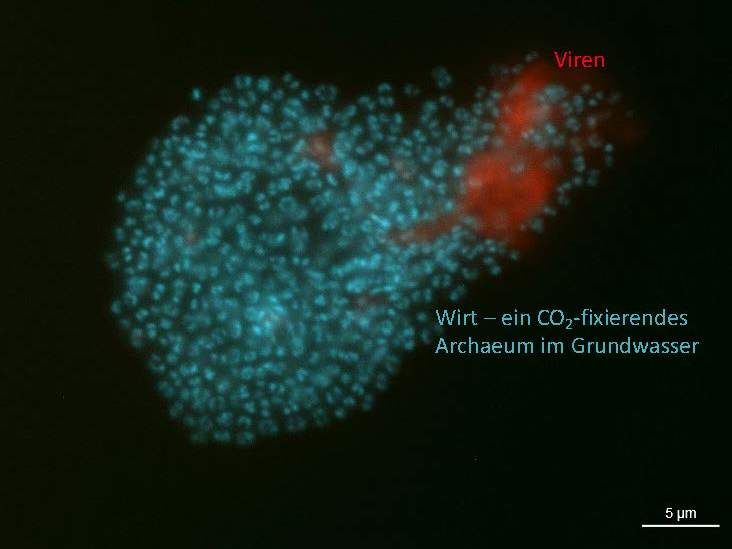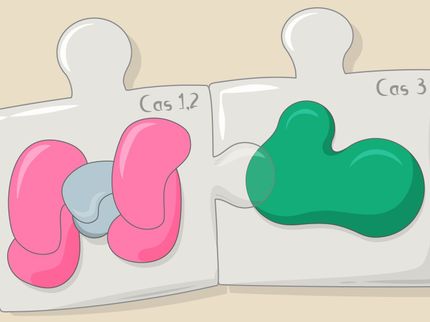Food chain in the dark
Advertisement
The discovery is groundbreaking: previously unknown viruses live in the subsoil of our planet, they infect unicellular microorganisms, the so-called Altiarchaea. The remarkable thing is that they start the food chain in an ecosystem that is actually hidden from our eyes. An international team led by Professor Dr. Alexander J. Probst from the University of Duisburg-Essen (UDE) has discovered both. The results were published in the scientific journal "Nature Communications" *.

Viruses and their host - a CO2-fixing archaeum in groundwater.
© V. Turzynski, L. Griesdorn, A. Probst
Some archaea live deep underground without oxygen, generally have no cell nucleus, and their DNA molecules lie in the cell plasma without a shell. How many different of these single-celled organisms there are, and how they affect Earth's biological processes, has only been studied for a few years. Altiarchaeon was discovered as one representative about twenty years ago in a swamp. It is known that they convert a lot of CO2, which influences the carbon cycle of the planet.
Currently, Professor Probst and the research group found Altiarchaeon in the groundwater of the Mühlbach sulphur spring in Isling, Regensburg. They stumbled upon the unknown viruses that infect the microorganisms while analyzing water taken from a 35-meter-deep aquifer at the sulfur spring. "That they exist there, we have seen under the microscope before. Now we can also detect them molecularly," says the UDE scientist. In the laboratory, the viral pathogens cannot yet be cultivated and are therefore nameless.
And what happens when the unknown viruses invade Altiarchaea? "Viral infection of the host - that is, the altiarchaeon - means that it is destroyed, it dies. However, the dead microorganism is then a food source for other organisms. The infections are thus a jump-start for the organic carbon cycle in the ecosystem," explained microbiologist Probst. This shows that the viruses on the one hand negatively influence the binding of CO2 in the subsoil of the earth, and on the other hand prepare the food source for other organisms.
Scientists from the universities of Duisburg-Essen, Munich, Oldenburg and the US Lawrence Berkeley National Laboratory were involved in the study. Professor Probst's group travels to the source in Regensburg several times a year for further studies of Altiarchaea and its viruses.
Note: This article has been translated using a computer system without human intervention. LUMITOS offers these automatic translations to present a wider range of current news. Since this article has been translated with automatic translation, it is possible that it contains errors in vocabulary, syntax or grammar. The original article in German can be found here.
























































